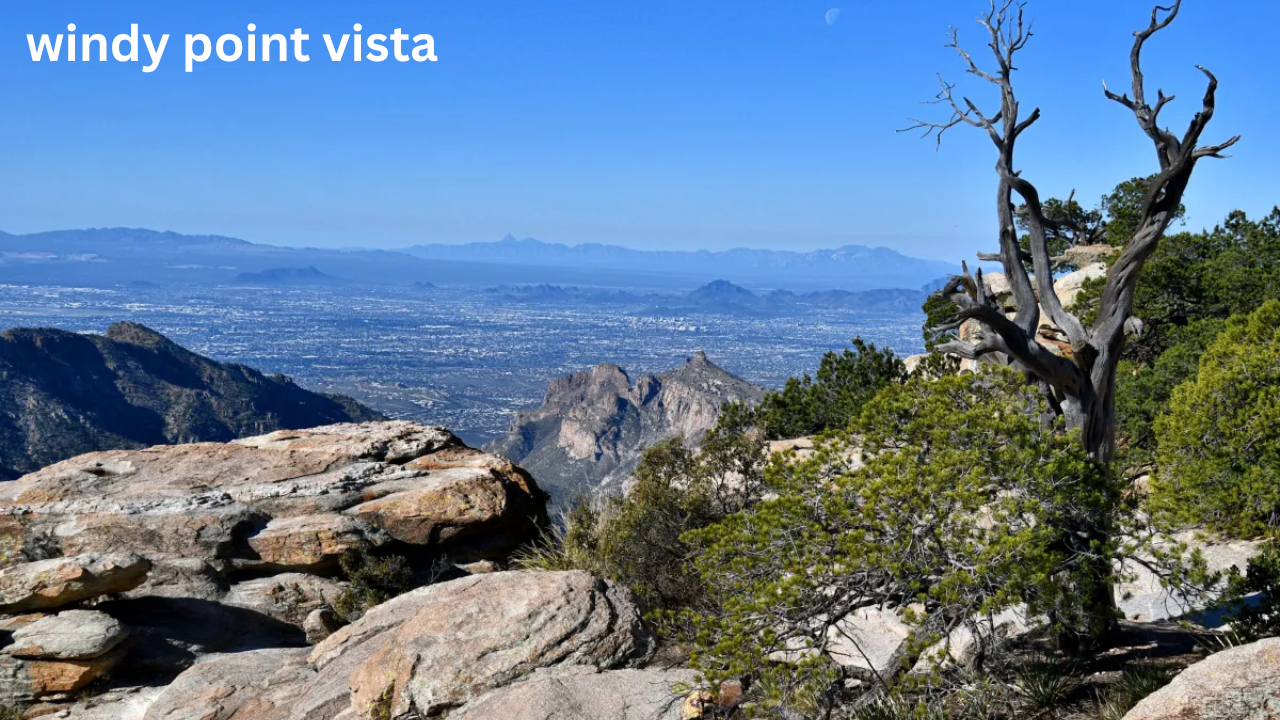Tucked windy point vista away in the rugged Santa Catalina Mountains near Tucson, Windy Point Vista is one of Arizona’s most iconic scenic lookouts. Perched at an elevation of over 6,000 feet along the Catalina Highway—also known as the Sky Island Scenic Byway—this breathtaking viewpoint offers panoramic vistas of the desert below, the surrounding mountains, and even glimpses of the distant city lights. Whether you’re a seasoned hiker, a road tripper, a landscape photographer, or someone seeking a peaceful escape into nature, Windy Point Vista is a must-visit destination.
What sets Windy Point apart from many other scenic spots is its unique blend of elevation, accessibility, and raw natural beauty. With easily navigable access from the city and facilities for casual visitors, it offers the kind of high-altitude views typically reserved for more remote locations. This convergence of convenience and grandeur makes it one of the crown jewels of Southern Arizona.
Beyond just a visual feast, Windy Point Vista also tells a story of geology, ecology, and human history. From ancient rock formations sculpted by erosion to the presence of flora and fauna from multiple ecosystems, this lookout is part of a dynamic “sky island” environment. Let’s explore the many layers of Windy Point Vista—from how to get there and what to expect, to the historical significance and best ways to enjoy your visit.
Location and Accessibility
Where is Windy Point Vista?
Windy Point Vista is located approximately 14 miles up the Catalina Highway, en route to Mount Lemmon, Arizona’s southernmost ski destination. This lookout sits high within the Santa Catalina Mountains, offering views that span across Tucson’s Sonoran Desert basin and far beyond. Thanks to its strategic location, Windy Point serves as a natural transition zone between desert and alpine environments, earning its place along what is famously referred to as the Sky Island Scenic Byway.
This geographic positioning is vital for understanding the lookout’s popularity. As you ascend the Catalina Highway, you traverse multiple ecosystems in just a short drive—desert scrub gives way to oak woodlands, pine forests, and finally, subalpine firs. Windy Point offers one of the most dramatic stops along this route, where you can literally see the changes in terrain unfold beneath you.
How to Get There
Reaching Windy Point Vista is a straightforward and enjoyable experience. From downtown Tucson, simply head northeast on Tanque Verde Road, which turns into the Catalina Highway. The drive takes roughly 40 to 45 minutes, and you’ll quickly find yourself climbing through winding roads with increasingly spectacular views. This road is well-maintained year-round, though conditions may vary in winter due to snow and ice at higher elevations.
Spring and fall are the most comfortable times to visit, offering mild temperatures and clear skies. However, each season offers its own charm—summer brings dramatic monsoon clouds, while winter often dusts the upper elevations with snow, transforming the area into a magical mountain escape.
Parking and Facilities
Windy Point features a dedicated parking area, capable of accommodating both cars and RVs, though it can fill quickly during weekends and holidays. Once parked, visitors will find paved paths, guardrails, and multiple platforms designed for optimal viewing and photography. Public restrooms and picnic tables are also available, making it a convenient stop for families and groups.
Accessibility is one of Windy Point’s strongest attributes. The viewing areas are wheelchair-friendly, and the short walk from the parking lot to the lookout is gentle and manageable for visitors of all ages and physical conditions. This inclusiveness allows everyone to experience the breathtaking vistas without the need for strenuous hiking.
Scenic Beauty and Natural Features
Panoramic Views and Photo Opportunities
Standing at Windy Point Vista, you’re treated to a 360-degree panoramic view that encompasses everything from the sprawl of Tucson below to the distant outlines of neighboring mountain ranges. This is a photographer’s paradise, with ever-changing lighting, cloud formations, and colorful desert flora making every visit a unique visual experience.
Sunrises here are ethereal, casting soft golden light over the rocky ledges, while sunsets bathe the mountains in rich purples and oranges. At night, the viewpoint transforms again, offering incredible stargazing and views of the city lights below. Whether you bring a professional camera or a smartphone, you’re guaranteed to capture unforgettable images.
Geological Formations
Windy Point is not just about views—it’s a geological wonderland. The area is characterized by striking granite outcrops, hoodoos, and weathered boulders, many of which have been sculpted over millennia by erosion and wind. These rock formations provide a glimpse into the Earth’s deep past, where tectonic forces and natural weathering created the rugged terrain we see today.
The stacked rock towers and balanced stones are not only fascinating to observe but also provide insight into the dynamic geological history of the Southwest. Interpretive signs along the overlook offer additional educational information about the formation of the Santa Catalinas and the unique geological processes that shaped this high-altitude desert-scape.
Flora and Fauna
Due to its location within a “sky island” ecosystem, Windy Point Vista is home to an astonishing array of plant and animal life. From desert cacti and agave at the lower elevations to towering pines and fir trees at higher altitudes, the transition of flora is rapid and remarkable. Depending on the time of year, visitors may spot wildflowers like lupines, penstemons, and Mexican poppies adding a splash of color to the rocky terrain.
Wildlife sightings are common as well. Keep an eye out for Coatimundi, Mule Deer, and even the occasional black bear in the summer months. Birdwatchers will delight in spotting hawks, hummingbirds, and peregrine falcons that nest along the cliff sides. This biological richness adds another layer of wonder to the experience.
Activities and Things to Do
Hiking Trails Near Windy Point
While Windy Point Vista itself is more of a sightseeing stop, there are numerous hiking trails in the surrounding areas that cater to all skill levels. One of the nearest and most popular is the Aspen Trail, accessible a bit further up the highway near Marshall Gulch, offering cool forests, stream crossings, and sweeping overlooks.
For a short hike with big rewards, try the Bug Spring Trail, which offers excellent views and plenty of desert plant life. Serious hikers might opt for the Mount Lemmon Trail #5, a longer trek that takes you into the heart of the pine forests. Always check trail conditions before setting out, and remember that weather can change quickly in the mountains.
Rock Climbing and Bouldering
Windy Point is a popular destination for rock climbers, thanks to its variety of granite walls and boulder formations. Climbers from across Arizona come here to test their skills on routes that range from beginner-friendly scrambles to advanced technical climbs. The granite provides excellent grip, and the views from the top of a successful climb are nothing short of spectacular.
Climbing here is best during the cooler months of spring and fall. If you’re new to the area, consider checking in with local climbing groups or guides who can recommend the safest and most scenic routes.
Picnicking and Relaxation
For those looking to unwind, Windy Point offers several areas perfect for a leisurely picnic or simply soaking in the peace of the mountains. Benches and stone walls provide places to sit, read a book, or enjoy a quiet lunch while overlooking the valley. The peaceful setting, often accompanied by the sound of birdsong or wind rustling through the pines, is perfect for reflection or creative inspiration.
Visitors often spend hours just sitting and taking in the surroundings. Whether you’re planning a romantic date or a family day trip, Windy Point makes for an unforgettable setting.
Cultural and Historical Significance
Indigenous History and Heritage
Long before roads and lookout points existed, the Santa Catalina Mountains were part of the traditional lands of the Tohono O’odham and Apache peoples. These communities considered the mountains sacred and used them for spiritual ceremonies, seasonal migrations, and hunting grounds. Their connection to the land remains strong, and their legacy is an essential part of the area’s cultural fabric.
Although there are no interpretive exhibits at Windy Point directly referencing indigenous history, visitors are encouraged to approach the land with respect and an understanding of its deeper significance.
The Sky Island Concept
Windy Point Vista is a key spot within the Sky Island Region, a term used to describe isolated mountain ranges surrounded by desert lowlands. These “islands” are home to unique microclimates and species found nowhere else. This makes the region one of the most biologically diverse areas in North America.
The rapid shift from desert to forest seen along the Catalina Highway is a prime example of this concept. Each elevation gain introduces a new habitat, and Windy Point sits at the heart of this ecological crossroads.
Development of the Catalina Highway
The Catalina Highway was constructed in the 1930s by the Civilian Conservation Corps (CCC) and took nearly 20 years to complete. It is considered one of the most scenic drives in the U.S., not just for its beauty but also for its engineering excellence. Windy Point was developed as one of the main stopping points, offering travelers a safe and accessible place to admire the vistas.
Today, it stands as a testament to both natural splendor and human ingenuity, welcoming over a million visitors annually.
Conclusion
Windy Point Vista is more than just a scenic overlook—it’s a gateway to adventure, a photographer’s dream, a geological marvel, and a place of peace. With easy access from Tucson, it offers one of the most rewarding short drives in the Southwest, giving visitors a front-row seat to Arizona’s diverse landscapes and skies.
Whether you’re there for a quiet sunset, a hiking excursion, or simply to breathe in the mountain air, Windy Point Vista delivers an unforgettable experience. As you plan your visit, remember to respect the land, pack responsibly, and take time to truly absorb the beauty of this desert mountain gem.
FAQs
Q1: Is there an entrance fee to visit Windy Point Vista?
No, there is no fee to access Windy Point Vista. However, some nearby trails may require a Coronado National Forest day-use pass.
Q2: What is the best time of day to visit for optimal views?
Early morning and late afternoon offer the most dramatic lighting and fewer crowds. Sunset is particularly popular.
Q3: Is Windy Point Vista suitable for children and pets?
Yes! It’s family- and pet-friendly. Just ensure children and pets are supervised near the edge.
Q4: Can you camp overnight near Windy Point?
Camping is not allowed at Windy Point itself, but there are several campgrounds further up the Catalina Highway.
Q5: Are there guided tours available in the area?
Yes, several local tour companies offer scenic drives and hikes that include Windy Point Vista as a stop.
You May Also Read: https://infonewsblaze.com/corpenpelloz/






